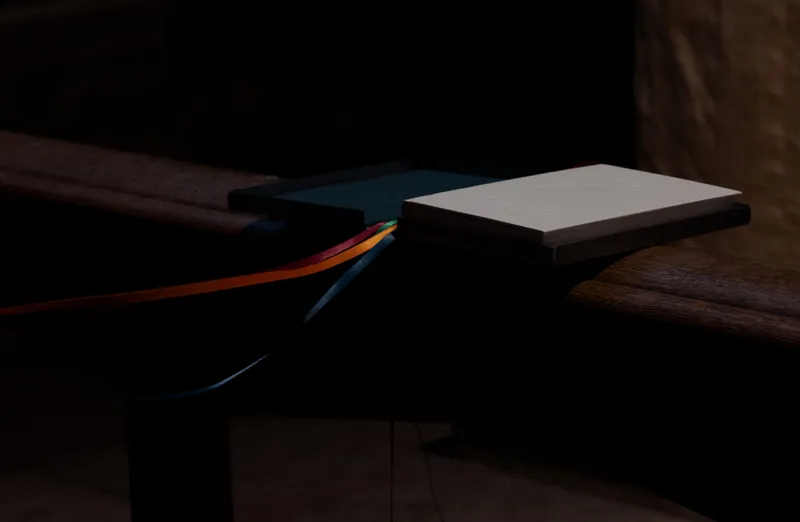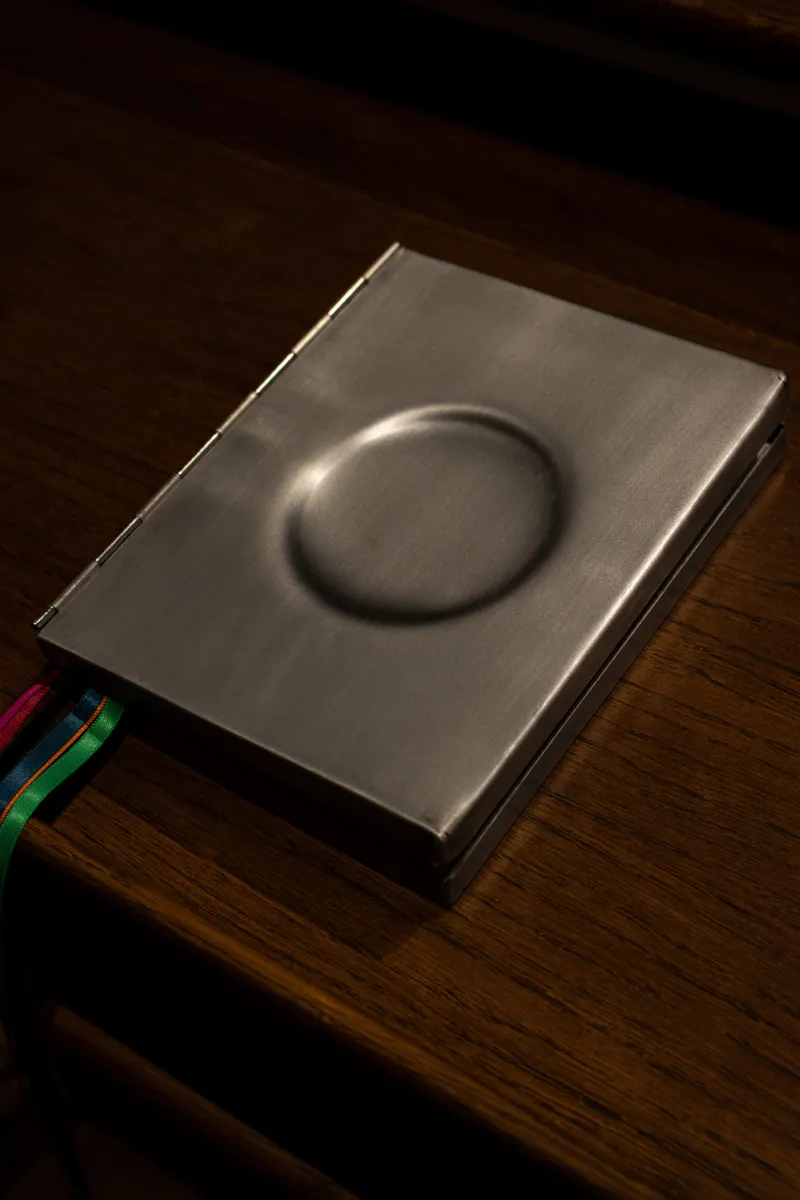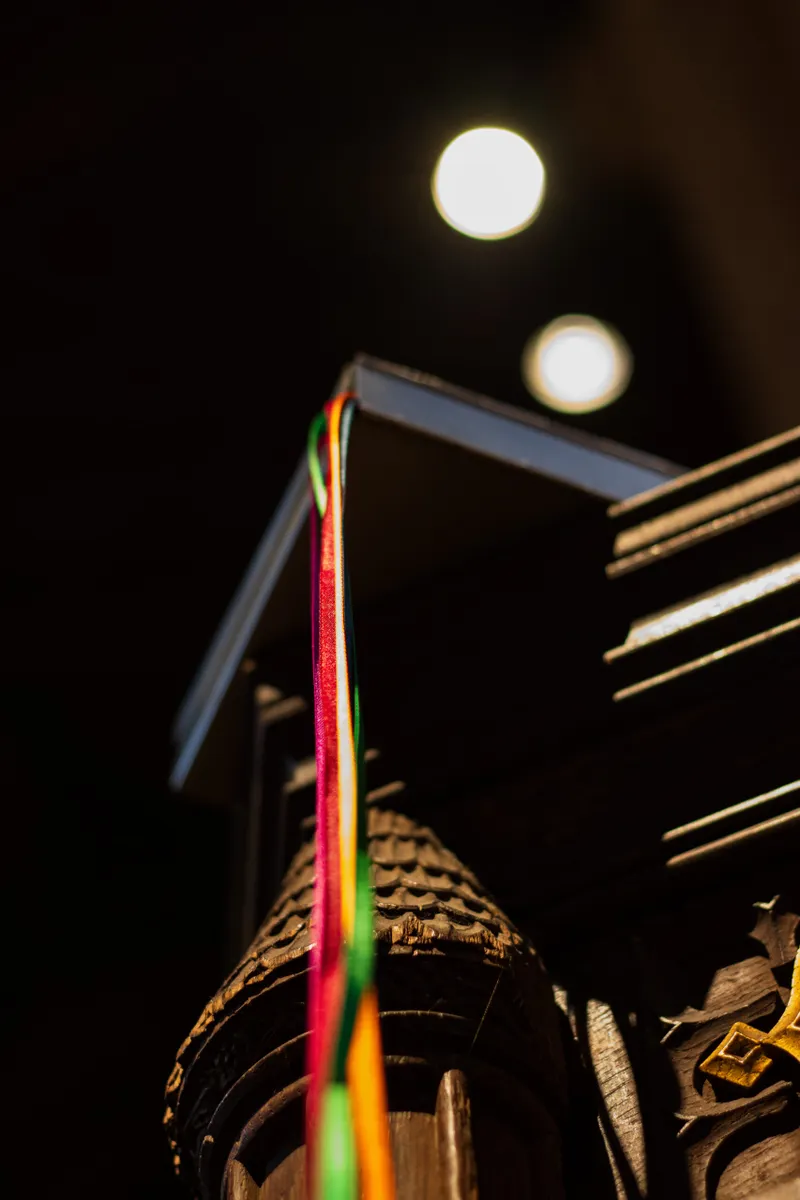How creativity and context in Christian visual art affects religious belief and practice: a study of contemporary responses to artistic representations of the Last Supper.
Visual art is a tool of communication creating narratives and establishing connections between groups of people. It lends itself to interpretation, perhaps to a greater degree than written text or storytelling. I chose paintings of the Last Supper across the Global North and South exploring issues of patriarchy, inclusion and politics often concealed in dominant Christian narratives. My essay offered personal reflections on these diverse depictions.
These topics influenced the design of the final output. The layout of the text replicated a classic bible style emphasising the tradition and familiarity of the way many people approach religion. But this delicate, debossed book was then placed into a welded metal case, emphasising the contrast between the fragility of the message and its context and how interpretation can have implications on religious belief and practice. I also wanted the viewer to have an appreciation of the scale of the paintings. To do this, ribbons the length of the paintings hung from the book and framed pages demonstrated the width of the paintings.
I want to use design to call out injustice and inspire hope not least by breaking down the echo-chambers that too often capture religious imagination. I am also aware of how context affects design and design interprets context. Always thinking how a design will be seen and shaped when it enters its space and ecosystem.
How creativity and context in Christian visual art affects religious belief and practice: a study of contemporary responses to artistic representations of the Last Supper.




